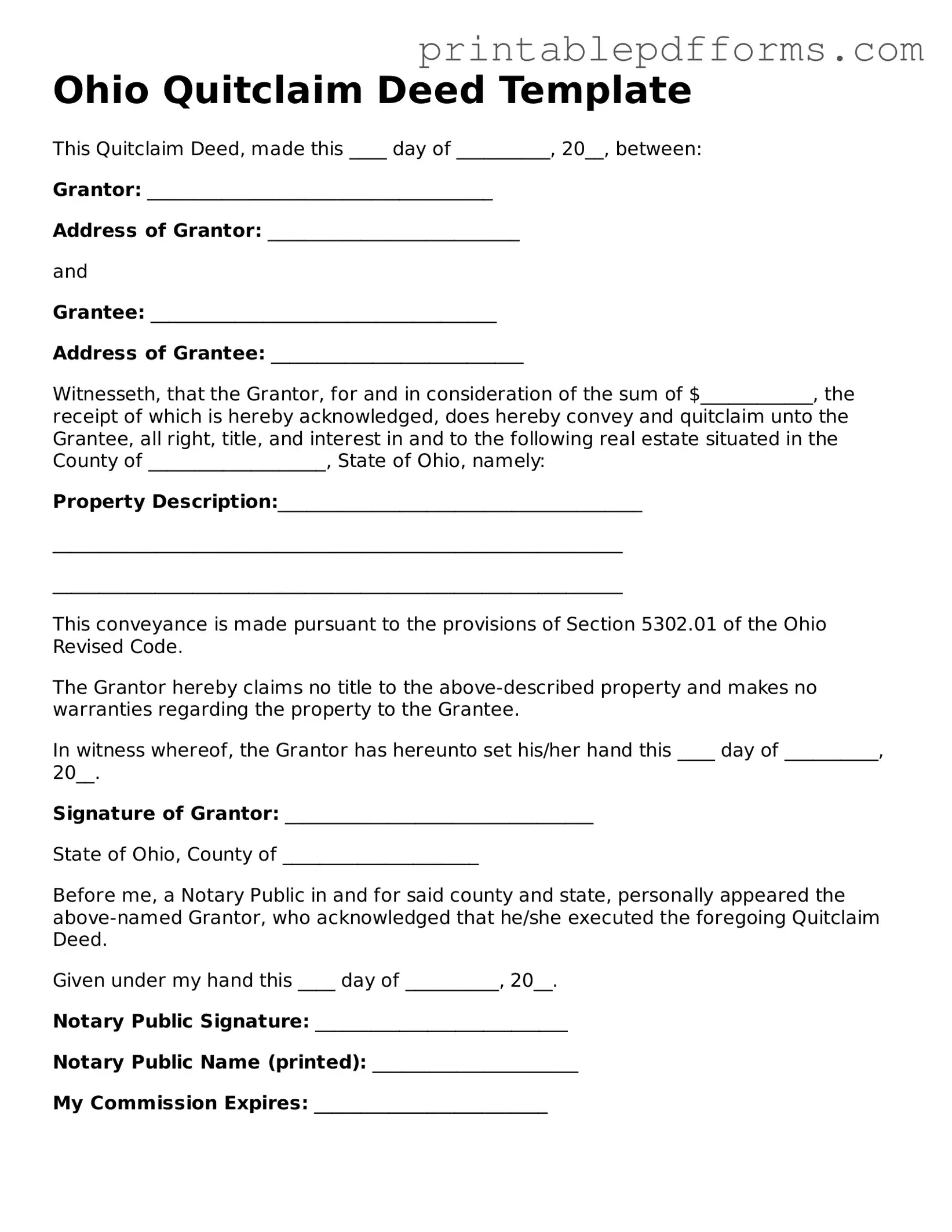Ohio Quitclaim Deed Template
This Quitclaim Deed, made this ____ day of __________, 20__, between:
Grantor: _____________________________________
Address of Grantor: ___________________________
and
Grantee: _____________________________________
Address of Grantee: ___________________________
Witnesseth, that the Grantor, for and in consideration of the sum of $____________, the receipt of which is hereby acknowledged, does hereby convey and quitclaim unto the Grantee, all right, title, and interest in and to the following real estate situated in the County of ___________________, State of Ohio, namely:
Property Description:_______________________________________
_____________________________________________________________
_____________________________________________________________
This conveyance is made pursuant to the provisions of Section 5302.01 of the Ohio Revised Code.
The Grantor hereby claims no title to the above-described property and makes no warranties regarding the property to the Grantee.
In witness whereof, the Grantor has hereunto set his/her hand this ____ day of __________, 20__.
Signature of Grantor: _________________________________
State of Ohio, County of _____________________
Before me, a Notary Public in and for said county and state, personally appeared the above-named Grantor, who acknowledged that he/she executed the foregoing Quitclaim Deed.
Given under my hand this ____ day of __________, 20__.
Notary Public Signature: ___________________________
Notary Public Name (printed): ______________________
My Commission Expires: _________________________
